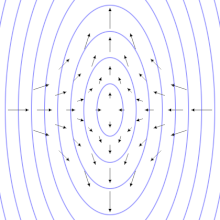Well since the launch of Windows 10 its been a topic of discussion around the web, across social media and even on paper media ( yeah I have seen them). Some are telling that Microsoft had linked with government agencies to violate our freedom of privacy and so on while others think its great, so what is true?
To understand and answer that question lets validate all the points of windows 10 in a five minute passage.
PRICING
Well all things in the world are compared with only one factor and that is its price, technically you are getting it free until July 2016 and that should eliminate any question that you might have regarding its feature. Come on guys you are getting it free if you love it take it else don't.
FEATURE
One thing that you have to admit is that its got a lot of features and even if you are not a windows fan boy or girl you will be mesmerized by this beauty. It had got advanced security features, improved firewall, AI- Cortana, better browser( well there are lots of them but still man its integrated ), DirectX12 and lots more. If you are using a windows tablet then it has lots of features like multi windows, easy access etc.
UPGRADE
Well this part was one of the most confusing and irritating part of windows ever since its launch. Every time it gets upgraded it got new variants in fact tons of variants and more over you have to pay a price for each one of them. Like we got XP and then Vista, followed by 7, 8 & 8.1.
Well gone are those days if you believe what Mircosoft says there will be no future version but only pure and simple upgrade of windows like you upgrade your browser chrome, firefox,opera,safari etc the just get upgrade to a new version instead of a whole new product.
COMPATIBILITY
Its compatible with all past generation of windows and will therefore be no harm on your old time softwares and games. Moreover because of improves coding and interface it will be a boom of gamers. Although many peoples have complained about certain software related issue, they will be resolved in future upgrades very soon.
PRIVACY
Now this is the most important part of this whole content and that's why you are reading it. So is it true that windows 10 is violating your privacy, well technically its both yes and no. Now you will be asking how, all the feature of tracking included in windows 10 is not new, your browser send cookie data to webpages you visit for advertising purpose and marketing. Your smart tv camera if connected to the internet can be accessed by government bodies to monitor you if necessary, your call can also be traced and tracked. So there is nothing such as privacy in today's world. Windows 10 is doing nothing that was not already be done, moreover the cortana feature is awesome and in order to understand you it has to record your data that you input. Moreover until and unless you are doing any thing illegal you don't have to fear the law enforcing agency. If you are worried about hacker then also you should all microsoft's features collects data related to marketing purpose only like products you see on an online retail page, hotels you searched for. So that will not be a problem.
Well that being said each of us have a different way of viewing things. What do you think about windows 10,do comment.



